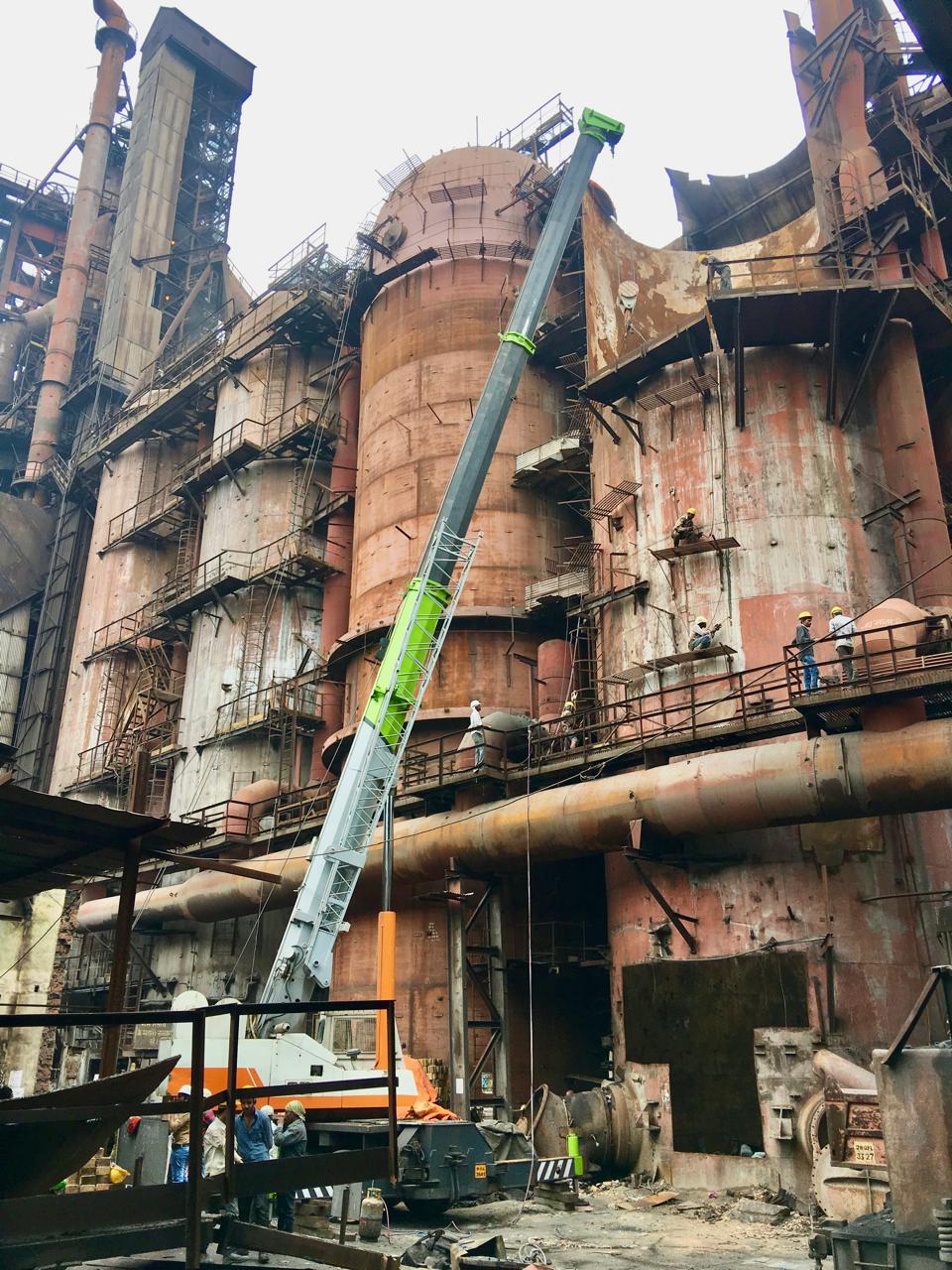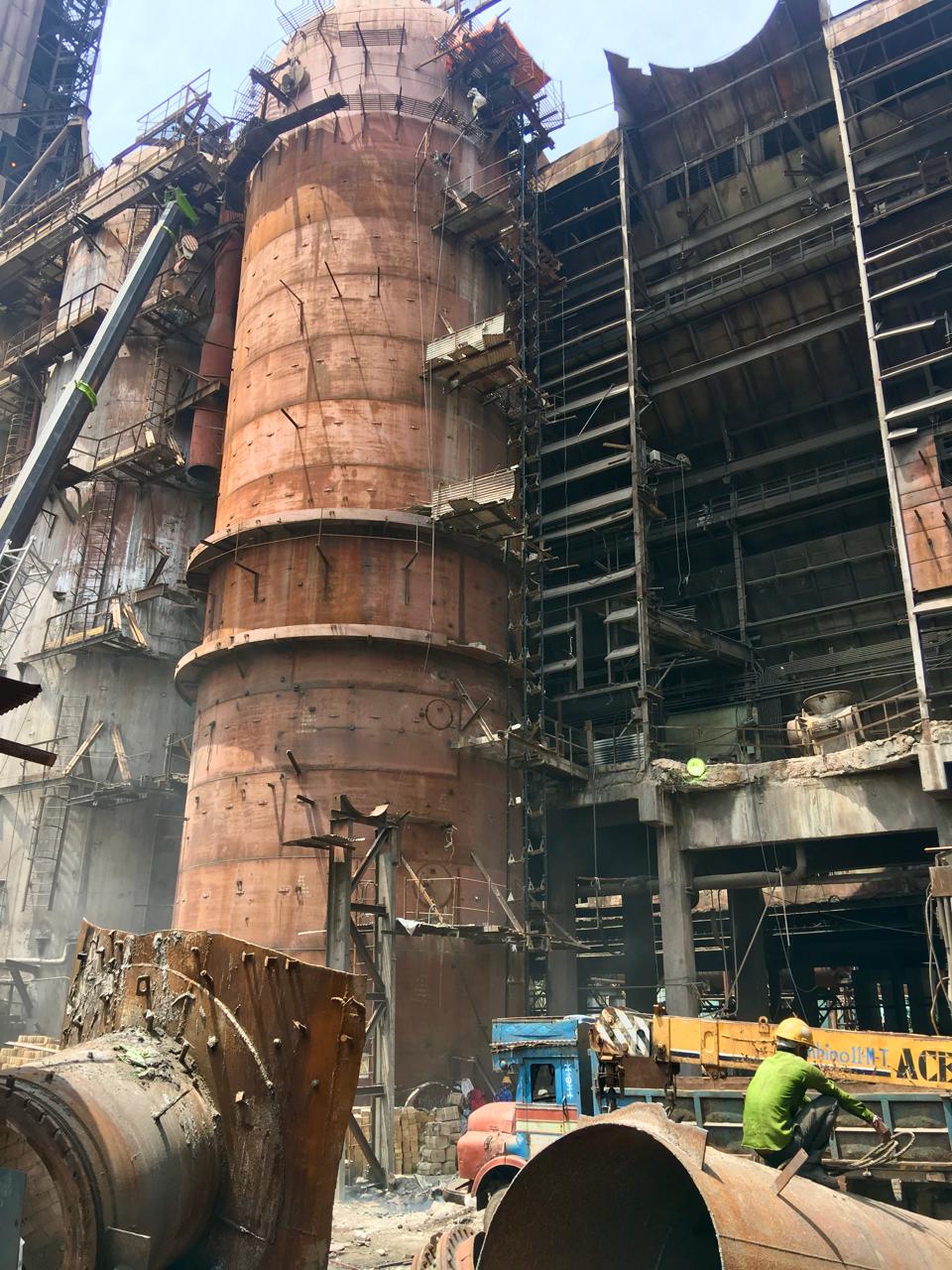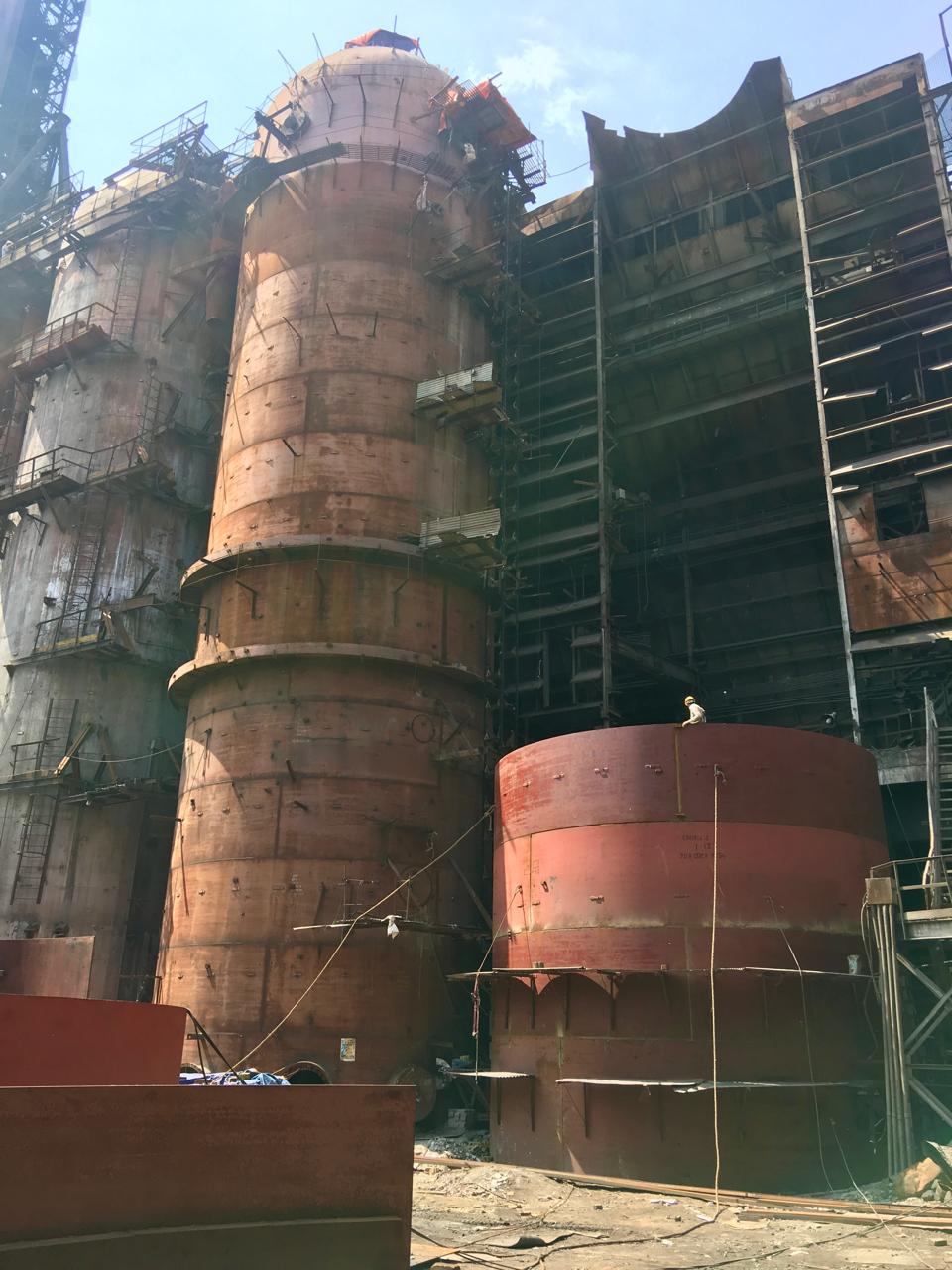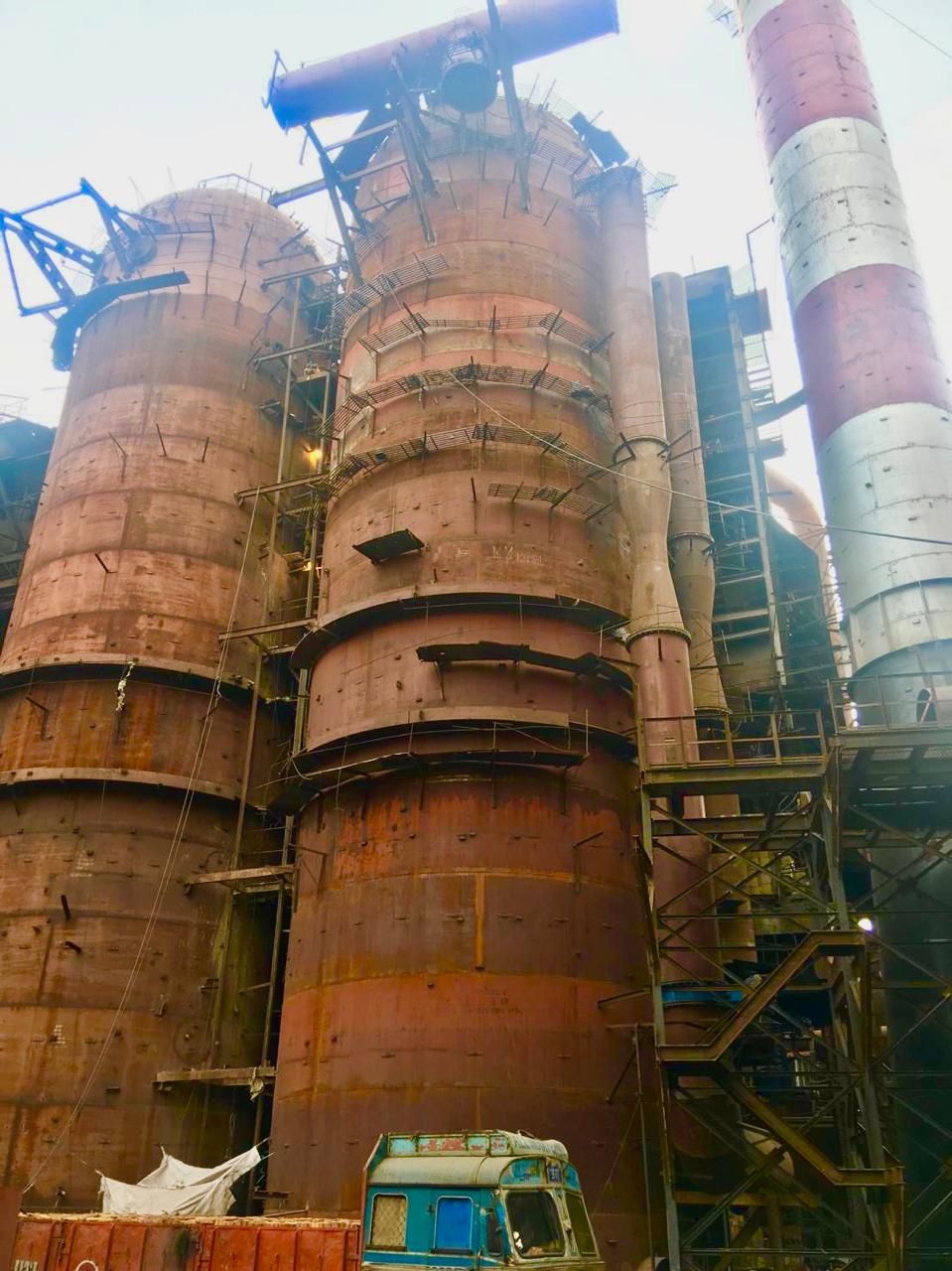RE-BUILDING OF STOVES FOR BLAST FURNACES
Rebuilding stoves for blast furnaces is a complex and critical process in the iron and steel industry. This involves refurbishing the hot blast stoves that preheat the air (blast) delivered to the blast furnace, improving efficiency and productivity. Here’s an overview of the steps and considerations involved in such projects, drawing on Evo Tech's expertise in this field:
- Site Inspection: Detailed examination of the current condition of the stoves, including structural integrity, refractory lining condition, and mechanical components.
- Data Collection: Gather operational data to understand performance issues, wear patterns, and specific areas requiring attention.
- Project Planning: Develop a comprehensive project plan outlining the scope of work, timelines, required materials, safety protocols, and labor requirements.
2) Design and Engineering:
- Customized Solutions: Design improvements based on the specific requirements of the blast furnace, considering factors like fuel efficiency, thermal performance, and durability.
- Material Selection: Choose appropriate refractory materials and components that can withstand high temperatures and corrosive environments typically found in blast furnace operations.
- Engineering Drawings: Prepare detailed engineering drawings and specifications for the rebuilding process.
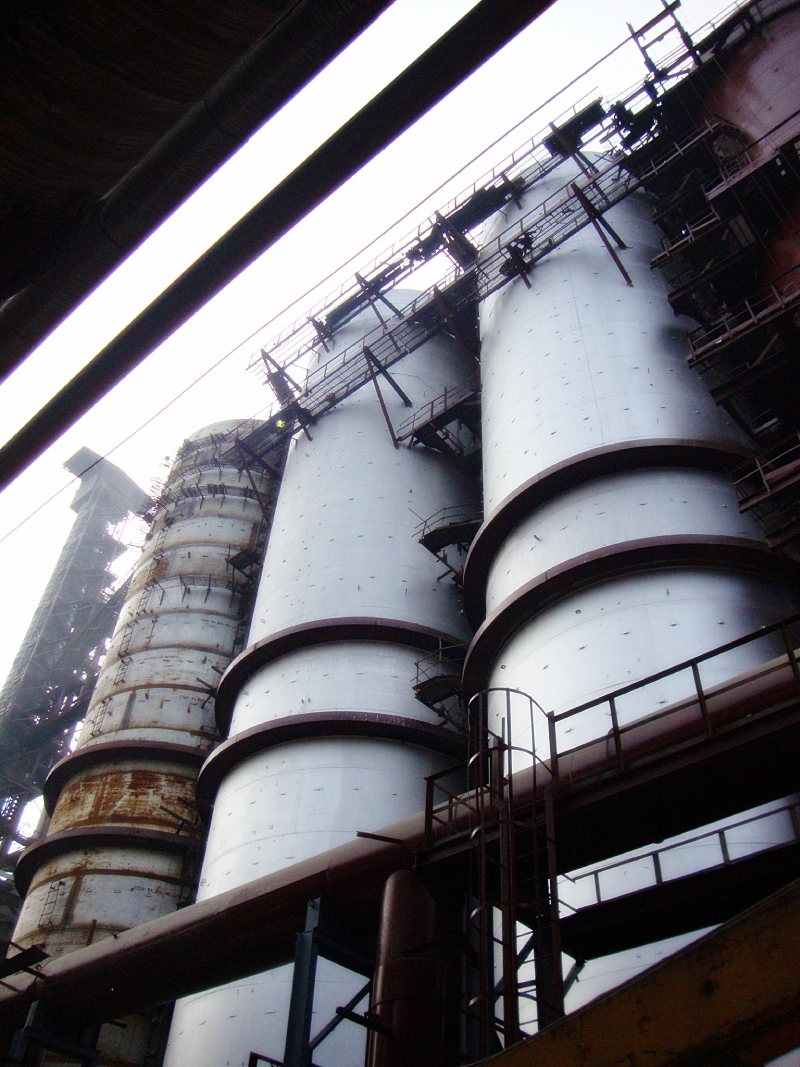
3) Procurement and Logistics:
4) Disassembly and Preparation:
5) Installation and Construction:
6) Quality Control and Testing:
7) Commissioning and Handover:
8) Maintenance and Support:
Key Considerations
- Sourcing Materials: Procure high-quality refractory bricks, castables, insulation materials, and other components needed for the rebuild.
- Logistics Coordination: Plan and manage the logistics for timely delivery of materials to the site, minimizing downtime and ensuring smooth workflow.
4) Disassembly and Preparation:
- Safety Measures: Implement rigorous safety protocols to protect workers during the disassembly of the old stoves.
- Dismantling: Carefully dismantle the existing stove structure, removing worn or damaged refractory linings and mechanical parts.
- Cleaning and Preparation: Clean the internal surfaces and prepare the structure for the installation of new materials.
5) Installation and Construction:
- Refractory Lining Installation: Install new refractory linings, ensuring proper alignment, thickness, and compaction for optimal thermal performance.
- Structural Repairs: Perform necessary structural repairs or reinforcements to enhance the stability and longevity of the stoves.
- Mechanical Components: Install or refurbish mechanical components such as valves, burners, and pressure-relief systems.
6) Quality Control and Testing:
- Inspection: Conduct thorough inspections at each stage of the rebuild to ensure adherence to design specifications and quality standards.
- Pre-commissioning Tests: Perform various tests, including pressure tests, to verify the integrity of the installation and identify any potential issues.
7) Commissioning and Handover:
- Initial Firing: Conduct a controlled initial firing to gradually heat the new refractory lining and cure the materials.
- Performance Monitoring: Monitor the performance of the rebuilt stoves during initial operations, making necessary adjustments to optimize efficiency.
- Training and Handover: vide training to the client’s operational staff on the new features and maintenance requirements of the rebuilt stoves.
8) Maintenance and Support:
- Ongoing Support: Offer ongoing maintenance services and technical support to ensure the long-term performance and reliability of the rebuilt stoves.
- Periodic Inspections: Schedule regular inspections and preventive maintenance to detect and address potential issues early.
Key Considerations
- Thermal Efficiency: Focus on improving thermal efficiency to reduce fuel consumption and operational costs.
- Durability and Longevity: Use high-quality materials and robust construction techniques to extend the life of the stoves.
- Environmental Compliance: Ensure the rebuilt stoves meet environmental regulations and standards, reducing emissions and minimizing the environmental impact.
By following these steps and considerations, Evo Tech can effectively execute projects for rebuilding stoves in blast furnaces, enhancing performance and ensuring the smooth operation of these critical components in the iron and steel manufacturing process.
